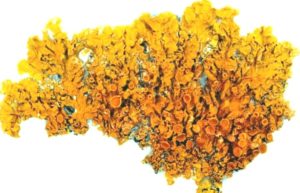In addition to the statewide measures and open-space protection efforts in Napa, Solano, and Santa Clara counties, citizens in Sonoma County and in the East Bay city of Fremont will also decide on critical habitat preservation measures in November.
The Sonoma County Agriculture and Open Space Preservation District has protected 70,000 acres in the county since 1990, when 58 percent of voters approved a quarter cent sales tax to pay for the district. Though the current sales tax doesn’t expire until 2011, supporters have put Measure F on the ballot to get voter approval to extend the funding to 2026. New state rules require the measure to get two-thirds of the vote in order to pass.
Guaranteeing funding so far into the future will strengthen the district’s hand in negotiations to protect more open space, says Brian Bottari, campaign manager at the Friends of Sonoma County Open Space, Agriculture and Clean Water. “A large part of the district’s effectiveness in land negotiations is the assurance of future funding,” he says. Though the funding will continue until 2011 even if this year’s measure fails to reach the two-thirds hurdle, “it would make [negotiations] more difficult if everyone knows the funding is going to dry up in four years.”
The extension would not involve any new taxes, but it would allow one important change in the allocation of funds: The proportion of district funding that can go to maintenance and operations would double, from 5 percent to 10 percent, which will allow more protected lands to be opened to the public sooner.
Bottari says polling on the measure makes him optimistic that it will pass, even with the higher two-thirds requirement. The only organized opposition has come from the Sonoma County Taxpayers Association, which, according to the Santa Rosa Press Democrat, opposes most tax measures and charges that the district has sometimes paid too much for land or bought land that was protected from development by other laws. For more information, visit the Friends of Sonoma County Open Space, Agriculture, and Clean Water at www.friendsofsonomacounty.org.
Meanwhile, in Fremont, a long-running fight over development near Coyote Hills Regional Park is heating up again. As we reported in our July-September 2002 issue, owners of the 428-acre Patterson Ranch property proposed rezoning the area to allow for high-density housing, but that effort was defeated by community opposition.
Now, the Patterson family has a new proposal to build between 800 and 1,200 houses on its land, and Cargill Corporation, which owns an additional 92 acres to the south near Highway 84, wants to build about 900,000 square feet of mixed office and industrial space, which would require filling about half of the low-lying site.
In response, a local grassroots group has put a measure on the November ballot to block the projects and protect the broad swath of open lowlands that runs from Highway 84 up to the Alameda Creek Flood Control Channel.
Howard High, with Friends of Coyote Hills and Fremont, says the all-volunteer organization got the measure on the ballot by gathering 13,000 signatures, well over the required amount, and turning them in two weeks before the deadline. Since then, the measure has won endorsement from a who’s who list of local environmental and conservation organizations, including the Ohlone and Golden Gate Audubon chapters, the Sierra Club, the Greenbelt Alliance, the California Native Plant Society, and the Citizens’ Committee to Complete the Refuge.
Measure K would permanently limit development on this land to rural and agricultural uses or to low-impact businesses that focus on outdoor recreation. For a map of the area that Measure K would protect, click here.
These diked baylands east of Coyote Hills support the largest remaining willow groves along the eastern shore of the Bay, the riparian corridor of Patterson Creek, and a permanent freshwater pond. Biologists have observed gray fox, deer, and 170 bird species here.
Current proposals from the Patterson family steer clear of the sensitive willow habitat, but critics remain concerned that pushing suburban development into the urban fringes will inevitably degrade valuable habitat—obviously in places that get paved over, but also in apparently untouched habitat nearby. “The concern is if you build right up to the edge of that willow grove,” says High. “Even now, as far away as the homes are, feral cats make their way to Coyote Hills. Ground nesting birds like quail just plummet.”
In addition to habitat loss from significant housing development, a city report on traffic found that 800 new homes on Patterson Ranch would mean over 15,000 additional car trips per day. If developers built 1,200 homes, that would mean almost 18,000 additional daily car trips.
For their parts, Cargill and Patterson have been paying for voter mailings and commercials on cable channels including ESPN and CNN, warning of the possibility that both landowners would sue for compensation under previous agreements made with the City of Fremont, which might mean a sizeable fiscal hit for the municipal budget.
However, even on an economic level, the projects may have significant problems: the location is valuable as wildlife habitat and has some potential for urban agriculture, but it would take significant public investment to make it work as a residential area. “We’re always going to need to build homes,” says Carin High, Howard’s wife, who is also active in the fight against the development proposals. “But the question is, do you do it in areas that are far away from mass transit, shopping, and other infrastructure? Having this go on the fringes actually costs the city money.”




